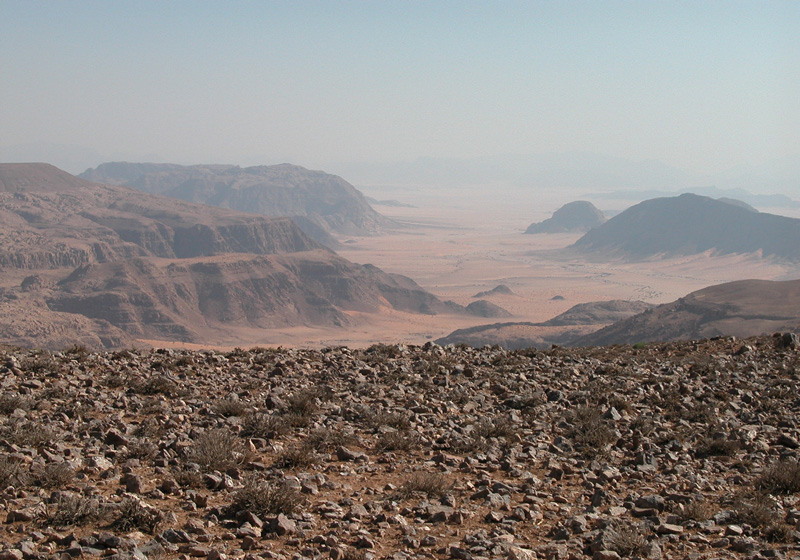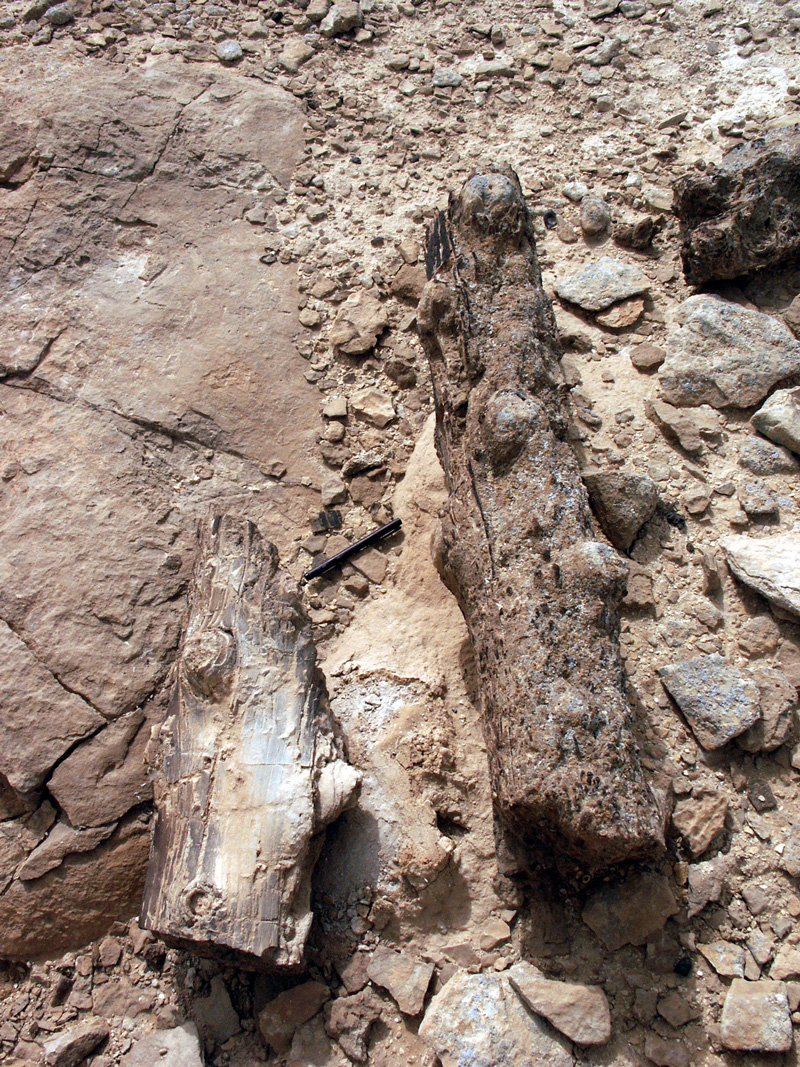Jabal Thallaja

An escarpment jutting out of the heavens, hanging like a balcony above Wadi Rum, the mountain range extending from Ras Al Naqab –and for some 50 kilometers to the southeast- hides within its dramatic folds secrets from remote and strange times.
Within a few minutes after leaving the Aqaba highway, and past the transmission tower to the east, a pure landscape, not yet scarred by road projects, engulfs you with and air of tranquility and ease. You drive on rugged dirt roads, and every now and then the wheels of the car rub against a bush of wormwood (sheeh’), releasing a trace of intoxicating aroma of the freshest sort.
The main track continues, away from the edge, heading almost in a straight line towards the southeast until Batn Al Ghoul, where a small castle hides away in its forgotten valley. From the main track many smaller and more difficult paths take you to different spots on the cliff, each with a unique and different view.
Like driving on a pile of wrinkled carpets, your eye develops the reading skills of a geologist, following the traces of rock layers and learning the way they bend and fold. Driving on this escarpment feels, somehow, like driving on a gigantic wall, with the landscape sloping smoothly towards Maan to the north, and dropping suddenly towards Wadi Rum and Disi in the south. This landscape is like an edge of a crater, formed by the uplifting of Wadi Rum’s rock layers, turning the edges of the Maan desert upwards. There is no better place to learn about the geology of Jordan and explore the land for fossils than here along this dramatic tearing. Here is a cut with continuously eroding surfaces revealing freshly exposed and clear sections of different geological ages.
Passing by in the slow-moving car, the countless stones in all shapes, sizes and colors on both sides can be confusing and somewhat overwhelming. You need to stop and walk every now and then, to be able to inspect an area more closely. After a while your eyes screen and alert you to the unusual objects only.
All of a sudden the car stops, and there is a stone with rings –by coincidence the sun is hitting it in the right direction at that moment so the rings are accentuated to be spotted from afar. Your eyes are telling you that this is a chunk of wood, but when you lift it, you cry –a stone. It is amazing how the fossilization process preserves even the finest details.
Looking around this spot, there are many other fragments, some as long as 30cm, some beautifully preserved complete with the rings and knots, and others with the outer texture.

From 1995 to 1997, during a survey of the area between Jabal Thallaja and Batn Al Ghoul, a team of geologists from the Natural Resources Authority discovered a tree trunk at least 7m in length and up to 35cm in diameter. Geologists Khaled Moumany, Ahmad Masri, and Khaled Tarawneh dated this fossilized tree to the Santonian age (83.5 to 85.8 million years ago) of the Upper Cretaceous. They also stated that the sandstone layer in which the tree was discovered was deposited by simultaneous meandering and branching rivers that prevailed between flooding of marshland and approaching marine shorelines.
In those times the land of Jordan was barely above the equator –still below the latitude line 10-North- somewhere near today’s Ethiopia. There was no Red Sea and we were still part of Africa. Some scientists speculate that the Santonian age, when these trees existed, was an age of great storms when high temperatures created conditions extremely favorable for cyclonic storms. Cretaceous poles were tropical paradises enjoying warm polar temperatures, equator-to-pole thermal gradient was low, and paleobotanical records show an absence of permafrost in the earth’s poles. The age of these fossilized logs, some 85 million years ago, was also a period of extremely high seas. Sea levels are known to have risen from +25 meters above today’s sea level to as high as + 200 meters, flooding into many of the continental interiors. Now, something of a paradox, fragments of that tropical forest of the late Cretaceous period, sit on an escarpment away from any sea, and as high as 1500 meters above sea level.
The petrified wood at Jabal Al Thallaja is an impressive asset of Jordan’s natural history. It is of great scientific importance for geologists, paleontologists and paleobotanists in Jordan and abroad, and it is part of a great record that gives us a window into the earth’s very remote past. We have inherited this chunk of rock that we call Jordan; it must be understood, protected and enjoyed.
The drive from Amman to Ras Al Naqab takes around two or two and a half hours. You can visit this destination and come back in the same day, but combining it with other destinations for a long weekend is a better idea. The mountain escarpment to the southeast of Ras Al Naqab, where Jabal Thallaja and Jabal Batra are located, is one of Jordan’s most scenic spots. For the first time visit a full day is needed. You can spend the night at Wadi Rum and continue exploring the next day. Jabal Batra (nothing to do with Petra) and its fossilized wood should be listed as protected natural heritage. Exact locations of tree fossils should not be made known for public knowledge to allow geologists and paleobotanists full access to a landscape that is as intact as possible. What has helped to protect the specimens is that finding fossilized wood is not easy; one has to develop an eye for it. A reliable 4x4 and a driver with good sense of direction and patience, are needed to make this trip a lasting memorable experience.